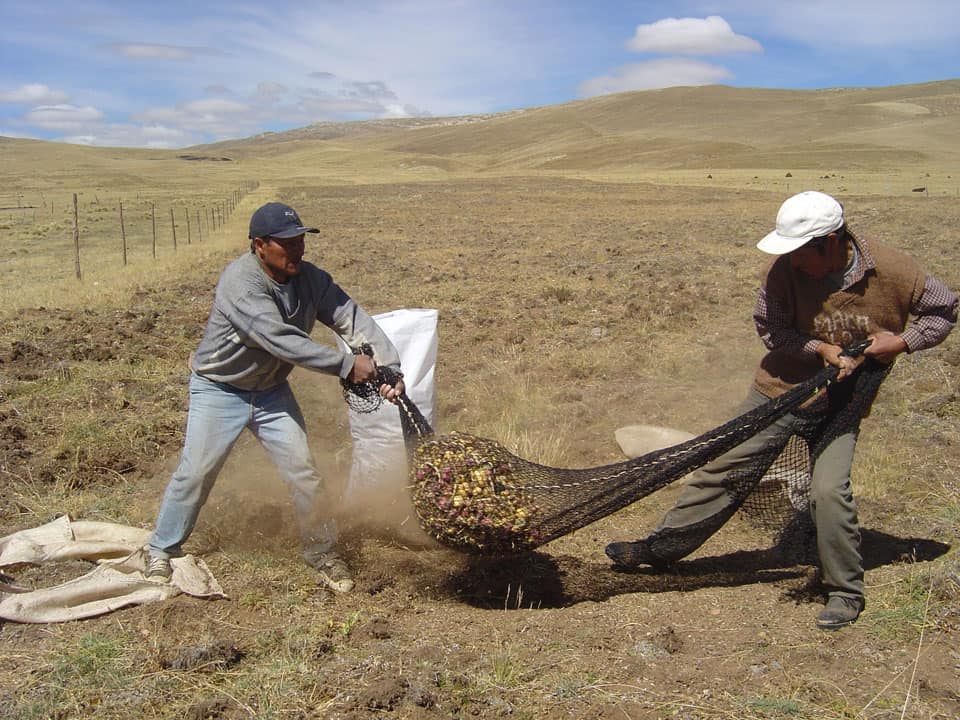What are the growing conditions for black, red, and yellow maca roots?
The maca root is a concentrated source of vitality that boosts the immune system for optimal well-being. The benefits of maca are so numerous that it can be used for various purposes. This plant, highly resistant to extreme weather conditions, is cultivated at high altitude on the high plateaus of the Andes in Peru. It is notably in the Junin region that maca cultivation takes place between 3,800 and 4,500 m.
It is grown on sunny land, in well-draining soil very rich in minerals. The root harvest is done by hand about 7 months after planting, from May to August. Farmers dry the tubers in the sun before grinding them to obtain maca powder.
The cultivation conditions are therefore the same for red maca, black maca and yellow maca. However, their nutritional value is slightly different. That is why each type of maca has its own purpose.
Also read Our tips for buying maca
What are the differences in nutritional value between each variety of maca?
Maca is a fortifying plant that has 13 different phenotypes. Each maca variety has a slightly different composition. The red does not have exactly the same nutritional value as the black or the yellow, as shown in this table.

Nutritional composition of red maca
The nutritional composition of red maca is distinguished by a higher content of pure protein and fiber than the other maca varieties. Its root is also the richest in glucosinolate, magnesium and potassium.
Nutritional value of black maca
The nutritional value of black maca is distinguished by its richness in iron and calcium. It is the least protein-rich of all macas, but the richest in vitamin B2. Its roots also provide the highest carbohydrate content.
Nutritional composition of yellow maca
The nutritional composition of yellow maca is the one that offers the highest levels of vitamin B3 and vitamin C. For this reason, its roots are the most consumed when people undergo a vitality treatment.
General nutritional composition for all types of maca
Although there are some slight differences in nutritional value among the varieties, the overall composition of maca (yellow, black, and red) remains relatively similar.
For a dosage of 100 mg of maca root extract, the composition is as follows.
- 10 to 15 mg of protein
- 60 to 75 mg of carbohydrates
- 8.5 mg of fiber
- 2.2 mg of lipids
- vitamin C
- minerals (potassium, magnesium, calcium, selenium)
- trace elements (iron, zinc, copper, iodine, manganese)
- 19 amino acids, including 7 essential ones
- fatty acids
- polysaccharides
- MTCA
- malic acid

What are the differences in use between each type of maca?
Are you looking for the perfect dietary supplement to restore your health? Have you heard of maca but don’t know which one to use? Each type of maca has a different use.
The different uses of red maca
The red maca has proven to be very effective for the natural treatment and prevention of prostate disorders. The red maca root is also ideal for stimulating fertility in women, increasing physical endurance, fighting the unpleasant symptoms of menopause and regulating the skin’s natural functions.
In which cases should you use yellow maca?
The yellow maca is both the most common superfood on the natural dietary supplement market and also the most effective for treating loss of tone. This Peruvian plant with aphrodisiac properties also helps boost libido.
Main uses of black maca
The black maca is the most appropriate for restoring hormonal balance in both men and women. It is also best suited to stimulate memory functions and improve concentration.
In conclusion, although their nutritional composition is very similar, the three varieties of maca each have their own specific characteristics. You therefore choose the type of maca root according to the health issue you want to address.



